Works


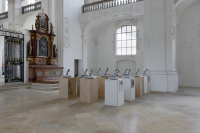

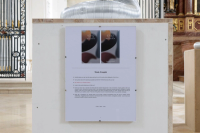

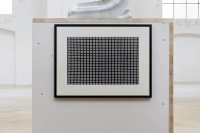


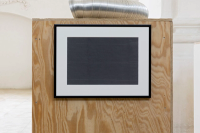

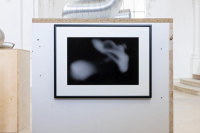



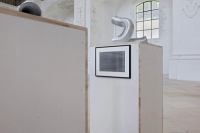
Installation Views
Press Release
Far from being a petrified historical monument, Bellelay is characterised by its instability and heterogeneity. The abbey was built at the beginning of the 18th century in a late Baroque style on the remains of Romanesque and Gothic churches of the 12th and 16th centuries. It was secularised in 1797 after the region’s invasion by Napoleonic revolutionary troops. The adjoining former monastery became a psychiatric hospital in 1899, which 123 years later moved to Moutier at the end of June 2022. The church, renovated in the 1960s, has hosted art shows since the 1970s, as well as musical programs and organ concerts. While we were preparing Emanuel Rossetti’s exhibition Beatitude, the site’s future still seemed full of promise. A few days before its opening, we learned that this future is in fact already partly mapped out. A press release from the Canton of Bern’s Directorate of Security announced that a cantonal ‘return centre’ for the families of migrants whose asylum applications have been denied will occupy one of the former hospital complex’s buildings starting on 15 July.
We are unsure of the role that contemporary art can play in such a context. Over the past few days, we have rethought the exhibition’s layout, especially in order to avoid any conflations. The exhibition is now presented in suspension.
Panoramic landscape photographs that were to have constituted a holographic walk in the abbey’s garden have been taken down. Inside the church, a multimedia installation of Staged Worlds, a form adopted by Emanuel Rossetti and Stefan Tcherepnin (*1977, Boston) for their collaborations, creates a tortuous tautology, in which the audience plays the role of conductor, its active presence linking reason and spirituality, art loops and architectural echoes.
In the church’s choir, eight vitrines display a second series of landscape photographs, in diptychs. The square prints, laid flat under glass, invite viewers to abstract themselves from the surroundings and plunge into the intimacy of these fragments of geography. Rossetti produced the majority of these images on excursions in the Jura while preparing this exhibit. The systematics of this survey of the regional landscape remains undecided. Each pair of photos has similarities and differences, creating an effect of stereoscopic convergence and decoupling. Through its interferences, superimpositions, loops, echoes and energizing of polarities, this show should underline Bellelay’s irresolution. That irresolution now concerns the lives of people awaiting a return, which rends the spectacle of an art show superfluous.
text by Sylvain Menétrey


















